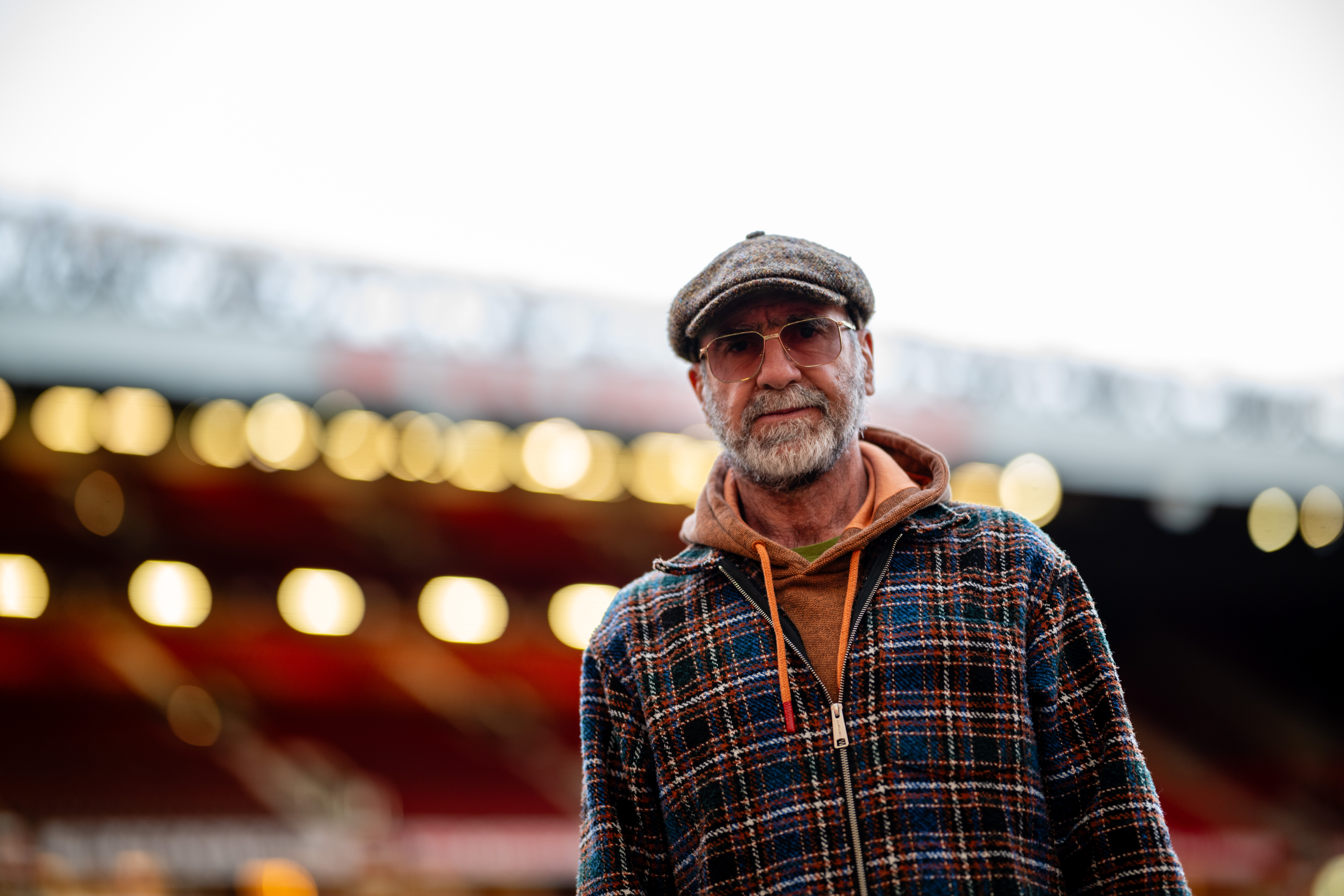Intercontinental class warfare: Why Corinthians vs Palmeiras is more than a game
The São Paulo set-to started as Spain vs Italy, became a class struggle and is littered with bitter feuds, as Celso de Campos Jr found out for the October 2003 issue of FourFourTwo...
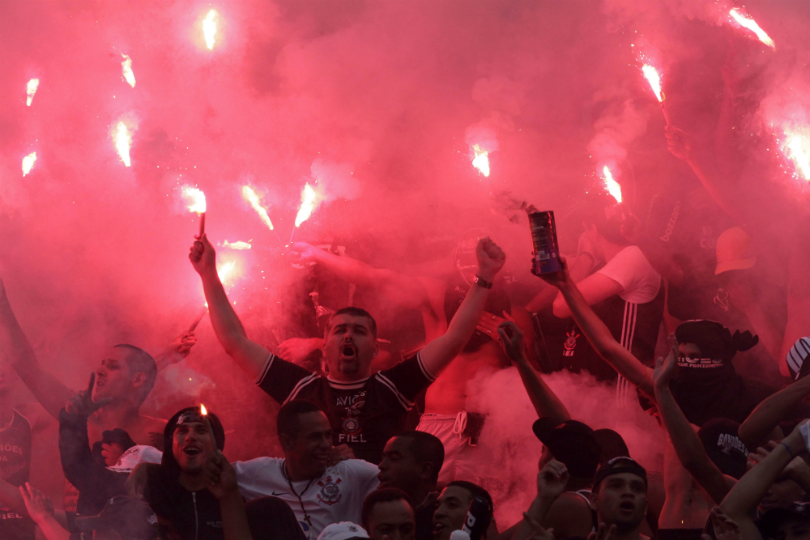
Palmeiras midfielder Magrao can’t stop staring at his bandaged left hand. Yesterday the ‘Green Warrior’ broke two fingers in a training-ground collision with team-mate Nenem.
Now, on the eve of the Sao Paulo State Championship semi-final first leg against arch-rivals Corinthians, the 24-year-old announces that despite the almost unbearable pain he will play with a special protection. The shocked team doctor rules him out. With the microphones off, Magrao grumbles about his untimely injury: “It must be a curse from the skunks.”
The skunks – gambas in Portuguese – are Palmeiras’ crosstown foes Corinthians. Lifelong Verdao (Big Green) fan Magrao’s disappointment at missing out is intensified by his belief that Corinthians are owed one, big-time. In 1999 Palmeiras won the Copa Libertadores, but just four years later finished 24th out of 26 in the Brazilian Championship and were relegated to the Second Division. And that one was definitely a curse from the skunks.
This State semi-final is the first clash since between these two bitter enemies of 86 years’ standing. To Magrao and his team-mates, winning the two-legged dual is a matter of honour. It won’t erase that shameful campaign, but at least it will give their fans something to shout about. But stunned by defeat to Santos in the finals of the Brazilian League, Corinthians also have some making up to do to their fans.
It's the first time the two sets of supporters will have met since a huge brawl involving fans of Corinthians, Palmeiras and Sao Paulo FC – at the Sao Paulo Carnival –
Hot enough for you? It gets warmer – the match is the first time the two sets of supporters will have met since a huge brawl involving fans of Corinthians, Palmeiras and Sao Paulo FC at the 2003 Sao Paulo Carnival, in which this city of 10 million people lets down its hair every year.
The clubs’ main supporters groups run samba schools which compete in the Carnival, among them Corinthians’ Gavioes da Fiel (Faithful Hawks) and Palmeiras’ Mancha Verde (The Green Phantom Blot, after the evil Disney character). Three weeks before the game, two died and dozens were injured in incidents at the schools’ parade at the Municipal Samba Arena and at Mancha Verde headquarters.
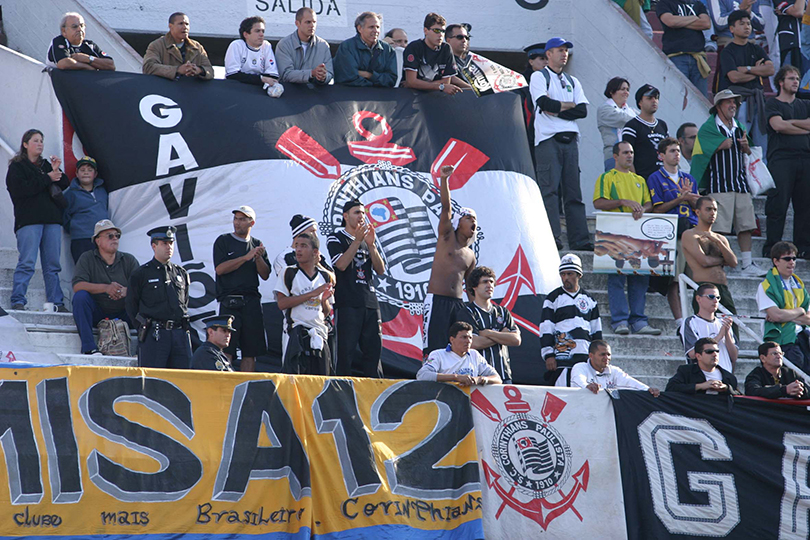
So, on an ice-cold Wednesday night, police are braced for the worst. In spite of promises of peace from both supporters’ clubs, 1,500 officers are called upon to enforce sanity at the Morumbi Stadium. In the event, that makes one officer per nine fans as fewer than 14,000 people turn up: scared away by the threat of violence and the horrible weather, the stay-at-homes watch the match live on TV screened by Brazil’s biggest two networks.
Get FourFourTwo Newsletter
The best features, fun and footballing quizzes, straight to your inbox every week.
The low turnout and muted atmosphere doesn’t affect the players. Magrao’s absence from the Palmeiras midfield is evened out by a thigh injury to Corinthians star Gil, the man nicknamed ‘Palmeiras’s Executioner’, and the boys from Parque Antartica start at breakneck speed, not letting their rivals settle and roaring to a 2-0 half-time lead thanks to Adaozinho and Nenem’s goals.
After the break, however, Corinthians are transformed. Not even ‘Saint’ Marcos, Palmeiras’ World Cup-winning keeper, can neutralise their deadly aerial attack. Anderson and Liedson both head home to tie the game, postponing the decision to the second leg and so keeping the nerves boiling till Saturday.
Palmeiras and Corinthians are historically linked by a series of eerie coincidences, their fates so deeply entwined that not even hate can separate them
Overnight o derby (the English word is used to describe Palmeiras-Corinthians) becomes the talk of the town. The other semi, Sao Paulo-Portuguesa, disappears amid the build-up to the second game. Despite their no-show at the Morumbi, fans paint the city half green, half black-and-white. Flag and headband sellers do a roaring trade in the jam-packed traffic, and replica shirts festoon every street. For a short time, at least, the record unemployment rates, terrifying violence and burdensome city taxes are forgotten.
Will Magrao be back for the second leg? Do Corinthians now hold the psychological advantage? Who will prevail in the latest skirmish between perhaps the world’s most intimate footballing enemies? These are questions on the lips of nearly every Brazilian. For Palmeiras and Corinthians are historically linked by a series of eerie coincidences, their fates so deeply entwined that not even hate can separate them.
Immigration and football
When slavery was abolished in Brazil in 1888, the powerful coffee estate owners who ran Sao Paulo started a campaign to attract low-paid European labour to the promised land. It was a difficult time in the Old Continent, and thousands of workers, especially Portuguese, Spanish and Italians, landed in Brazil hoping to begin a new life.
But skilled labour was also needed to build a rail infrastructure that would link the coffee plantations to the port of Santos, and for this operation professional engineers arrived from England and Scotland. Football followed them to South America’s largest country.
When Charles returned to Sao Paulo 10 years later, he brought with him two balls, a pair of football boots, an air pump and a book of the rules of Association Football
The story goes that in 1884, at the age of 10, Charles William Miller, the Brazilian son of a Scottish engineer, had been sent by his father to study at Banister Court School in Southampton. He shone as a left-winger in the school team, and was invited to play for St Mary’s Football Club (Southampton’s predecessor), the Hampshire County XI and even one game for the famous London amateur side Corinthians.
When Charles returned to Sao Paulo 10 years later, he brought with him two balls, a pair of football boots, an air pump and a book of the rules of Association Football. Almost before he knew it, football had seized the city. The wealthy played the new sport in clubs with all the equipment, the poor barefoot in the streets.
Football fever struck Brazil, and especially the immigrants. By the end of the first decade of the 20th century, there were already a handful of amateur football teams in Sao Paulo, mainly representing the city’s foreign communities. Mackenzie and Scotch Wanderers stood for the British Empire, Germania for the German immigrants and Lusitano for the Portuguese community. But no team represented Spain. So, on September 1, 1910, five workers from the Sao Paulo Railway decided to start a team.
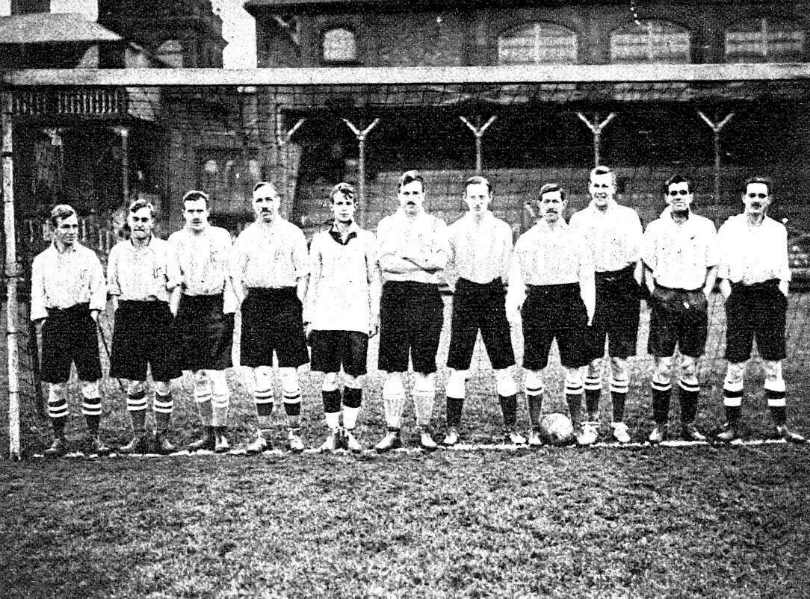
In a cake shop on Immigrants Street in the Born Retiro neighbourhood, they created Sport Club Corinthians Paulista, a tribute to England’s Corinthians which was touring Brazil at the time. The club immediately came to represent the local Spanish community of the Bras and Tatuape neighbourhoods, manual workers in the local industries.
Corinthians’ proletarian roots didn’t please the elitist Sao Paulo Football League who didn’t want the masses spoiling their respectable tournaments. But after three years of crowded stadiums at Corinthians, money talked
Corinthians’ proletarian roots didn’t please the elitist Sao Paulo Football League who, since 1902, had organised the State Championship and didn’t want the masses spoiling their respectable tournaments. But after three years of crowded stadiums at Corinthians, money talked.
The league saw that the club’s involvement could make their competition more profitable, so in 1913 the team made its debut in the tournament, a 3-1 defeat to Germania. A year later, Corinthians won their very first State crown.
Even before the triumph of the Spanish, five members of the Italian community, the largest in the city, had wondered why they didn’t have a representative in the top local football tournament. An ad was placed in the Fanfulla, Sao Paulo’s Italian newspaper, inviting all the paesani to join in the creation of a football club and on August 26, 1914, 39 people gathered in a ballroom on Marechal Deodoro street to found Palestra Italia.
Their Italian roots were proudly displayed, their blue shirt initially bearing the red and white badge of the House of Savoy. Soon after, to honour the Garibaldi flag, the kit changed to green shirts, white shorts and a red hat. (During WWII Brazil’s government, supporting the Allies, began a witchhunt against all things ‘Italian’ and, in 1942, faced with closure, Palestra Italia became Palmeiras.)
Spain vs Italy
In 1916, Palestra Italia entered the six-team elite championship after Scotch dropped out, recording a 1-1 draw against powerhouse Mackenzie. But the hot-blooded Italians and Spanish were already anticipating the clash between their teams and, by extension, their countries. (One story, neither confirmed nor denied, says the five Italians who founded Palestra Italia were former Corinthians.)
Centre-forward Caetano welcomed the black and white foes with a hat-trick in a 3-0 win and the stadium erupted into bedlam as the delirious Italians celebrated victory. Heads down, the Spanish swallowed their humiliation. And that’s where it all began
On May 6, 1917, the teams battled it out at Parque Antarctica, home of the Italians. Centre-forward Caetano welcomed the black-and-white foes with a hat-trick in a 3-0 win and the stadium erupted into bedlam as the delirious Italians celebrated victory. Heads down, the Spanish swallowed their humiliation. And that’s where it all began.
By the 1950s, the clubs’ connections with the Spanish and Italian communities had faded. Sao Paolo had seen a population explosion as thousands of low-paid Brazilians from the north-east swarmed to create the modern metropolis, and Corinthians and Palmeiras had come to represent, respectively, the impoverished and the middle class. (Sao Paulo FC was the team of the wealthy.)
That’s also when the clubs started to see their fortunes mysteriously connected. Title droughts, players switching sides, epic battles and the amazing twisted fates of the two greatest idols of Palmeiras and Corinthians...
NEXT: How Palmeiras rejected a Brazil legend
The Roberto Rivellino rejection(s)
When he arrived at the club’s training ground, Travaglini barely had time to glance in the direction of the young players giving their all to impress him. After two try-outs Roberto Rivellino was dismissed
The Rivellino Clan was exultant. Ten-year-old Roberto, the left-footed star of his youth futsal team, had just been called to a trial at Palmeiras. With Italian roots, the family bled green, and the young midfielder had grown up watching the likes of Djalma Santos, Waldemar Fiume, Chinesinho and Julinho Botelho defending the Palmeiras crest. Now he had a chance to show his skills to first-team coach Mario Travaglini.
But when he arrived at the club’s training ground, Travaglini barely had time to glance in the direction of the young players giving their all to impress him. After two try-outs Roberto Rivellino was dismissed.
Hurt but still dreaming of a football career, the youngster accepted an invitation to play for arch-rivals Corinthians’ youth side. Meanwhile his Banespa Club futsal team had reached the final of the city championship where, fate decreed, they would face Palmeiras.
Coach Travaglini was in the stands to watch the future stars in the Palmeiras team, but the only thing he could see was Roberto Rivellino. This wonder-kid wrecked Palmeiras’ title hopes and won the trophy for Banespa. Excited, Travaglini offered him another stint with Palmeiras. Rivellino refused.
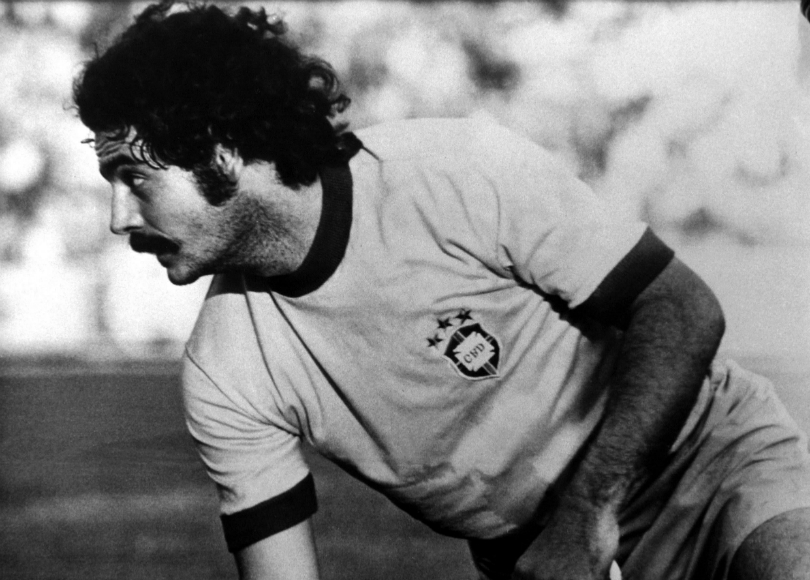
I was wounded by the treatment I received at Palmeiras. They didn’t even watch me play. I thought it was disrespectful. From then on I always wanted to beat Palmeiras to show them what they had missed
“I was wounded by the treatment I received at Palmeiras,” the 1970 World Cup winner recalls. “My expectations were high, but they didn’t even watch me play. I thought it was disrespectful – after all, I didn’t ask to be there, they invited me. So from then on I always wanted to beat Palmeiras to show them what they had missed.”
Arguably the finest player in Corinthians’ history, Rivellino debuted in the alvinegro first team in 1963. That same year a young prospect first pulled on a Palmeiras first-team jersey: Ademir da Guia, dubbed ‘The Divine’, would later be acclaimed as the best player in Palmeiras’ history.
But like Rivellino, he had also flirted with the enemy in his youth – and not simply because his father, legendary right-back Domingos da Guia, had played for Corinthians from 1944 to 1948.
Rato told my father that even though I played well, he couldn’t sign me because I was too young - the minimum age was 15. So we drove all the way back to Rio, where I returned to Bangu’s team. And then Palmeiras came
“The first time I ever put on football boots was to try out at Corinthians in 1955,” he says. “I was 13 years old and my dad took me all the way from Rio, where we lived, to Parque Sao Jorge. The youth coach was Rato, a former team-mate of my father’s. It was my first time at a professional club, on a proper pitch and I really enjoyed it.
"But Rato told my father that even though I played well, he couldn’t sign me because I was too young – the minimum age was 15. So we drove all the way back to Rio, where I returned to Bangu’s team. I stayed there for a long time. And then Palmeiras came.”
Revenge mission
A classy midfielder, Ademir de Guia became the cornerstone of the Parque Antarctica squad nicknamed ‘The Academy of Football’, the only team to rival Pele’s Santos in the 1960s. In 1972 and 1973, Palmeiras won back-to-back national titles, while Corinthians, despite Rivellino, struggled on through their second decade without a major title.
In December 1974, however, Corinthians got their chance. Exactly two years after they had last lifted the State Championship (against Palmeiras), Rivellino & Co. had the opportunity to end the painful in a classic showdown with their rivals.
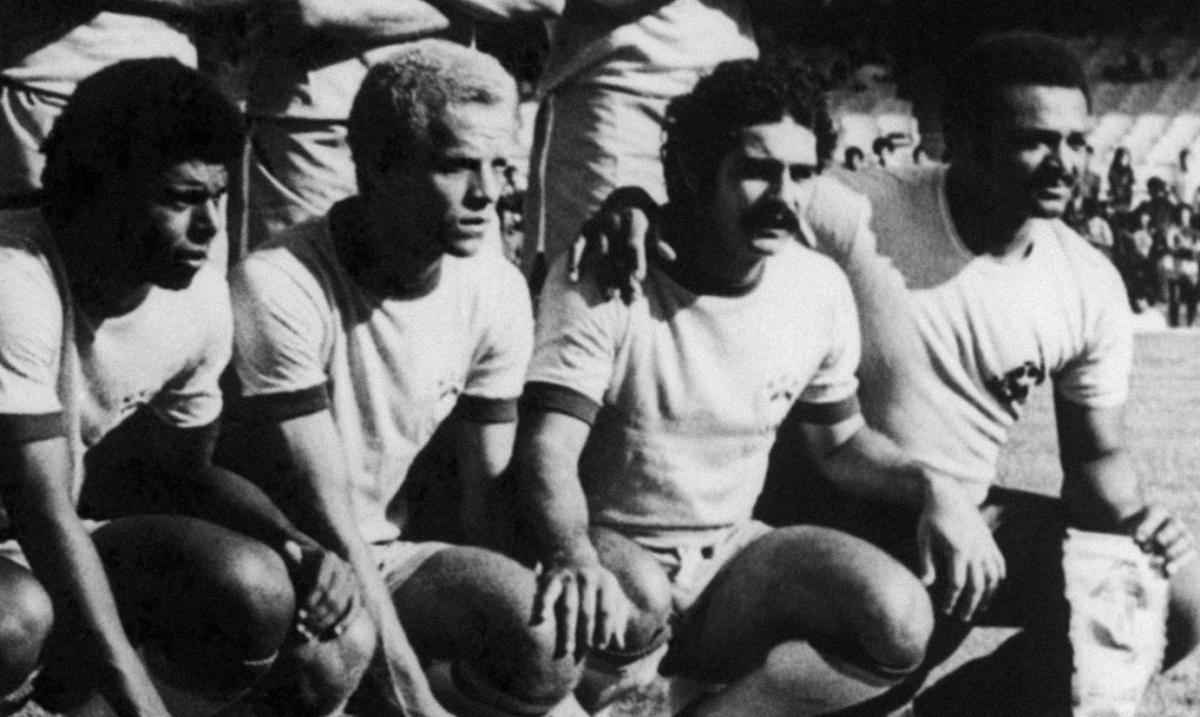
Over 120,000 people crowded into the Morumbi stadium for the State Championship final, of whom more than 100,000 were Corinthians fans. (The most recent survey by Placar showed that 40% of Sao Paolo State’s football fans support Corinthians while Palmeiras and Sao Paulo have around 20% each.)
We walked onto the pitch and saw only black and white flags, just a few green banners in the corner of the stands. I never saw anything like it.
“We walked onto the pitch and saw only black and white flags, just a few green banners in the corner of the stands,” recalls Ademir de Guia. “I never saw anything like it.” But Palmeiras forward Ronaldo (no, not him) scored the only goal of the game.
For Rivellino, it was the end of the line at Corinthians, where he had been the Reizinho (little king) for 11 years. “People said it was all my fault, that l hadn’t committed myself, that I played with a green shirt under the Corinthians jersey. Can you believe it?” He shakes his head, still bemused and hurt. “I thought about quitting football after that game. I never thought I’d leave Corinthians, but after that I knew my career there was over.”
So the man with the atomic kick departed for Fluminense and three years later Corinthians finally ended their 23-year drought by winning the State Championship against Ponte Preta. The key? On the bench was legendary trainer Oswaldo Brandao, the man who had coached them to their ’54 title campaign then denied them the 1974 crown as Palmeiras head coach.
And no sooner had Corinthians started winning than Palmeiras, the 1976 State Champions, started piling up the trophyless years. Ademir da Guia retired in 1977 – after a 2-0 defeat to Corinthians – and as the drought worsened, the club’s coaching staff began making ridiculous signings and laughable deals, including perhaps the stupidest trade in Brazilian football history, a deal that would hand their arch-rivals the key to their first national title.
In 1989, Emerson Leao was the Palmeiras coach. Among his players was a 23-year-old midfielder called Neto. Gifted and outspoken, with perennial weight problems – picture Paul Gascoigne without the booze – Neto had a cocky attitude that didn’t amuse Leao. So, to the unending dismay of all Palmeiras fans, he sent Neto to Corinthians in exchange for his former protege Ribamar, a player of little talent.
As an ex-Palmeiras player, my start at Corinthians wasn’t easy: I had to play my way out. Every time I faced Palmeiras I played as if it was my last match. I don’t hate Palmeiras, but I was mistreated and humiliated there so I wanted to pay them back
“I was going well, then one day they told me I was out,” recalls Neto. “Man, I suffered. As an ex-Palmeiras player, my start at Corinthians wasn’t easy. The day I was presented at Parque Sao Jorge, not one player got up to shake my hand. I felt I wasn’t welcome. I had to play my way out.”
Which he did, with aplomb. The following year, he was the star as Corinthians grabbed their first Brazilian title. “I was responsible for at least 50% of that title,” says the ever-humble Neto, now a director at Guarani. “And every time I faced Palmeiras I played as if it was my last match.
"I don’t hate Palmeiras, but I was mistreated and humiliated there so I wanted to pay them back. And that's why every time I go to Parque Antarctica with Guarani now I have to be protected by five or six security guys. People try to assault me, I even get spat on.”
Yet in the game that mattered most, Neto fell short. And he won’t forget it.
NEXT: Neto's nightmare
Reality nightmare
In the days preceding the second leg, Palmeiras coach Wanderley Luxemburgo showed his players the tape of Viola’s celebration over and over again. One week later, Palmeiras hammered Corinthians 4-0
In 1993, Palmeiras entered their 16th year without a title. But backed by Italian sponsors Parmalat, the club had assembled a dream team aimed at winning the State Championship and finally giving some joy to their long-suffering fans. Roberto Carlos, Edmundo, Evair, Zinho, Mazinho, Cesar Sampaio and Edilson were men on a mission as Palmeiras strolled through to the final to face a limited Corinthians side, whose only menaces were Neto and Viola.
Yet in the first leg, Viola scored the only goal. It was then that he made his fatal error: racing to the touchline, he began to imitate a pig. Since the late ’60s, Corinthians have called their foes porcos (pigs) but Viola had crossed the line. As Neto admits, “We lost the title there.”
In the days preceding the second leg, Palmeiras coach Wanderley Luxemburgo showed his players the tape of Viola’s celebration over and over again. One week later, Palmeiras hammered Corinthians 4-0. It was the greatest ever day for a generation of alviverde fans and players.
“I’ve been at Palmeiras for 14 years. I’ve won virtually every tournament, from the Brazilian League to the Copa Libertadores,” says goalkeeper Sergio, “but no triumph tasted as good as that. We ate them up and spat them out.”
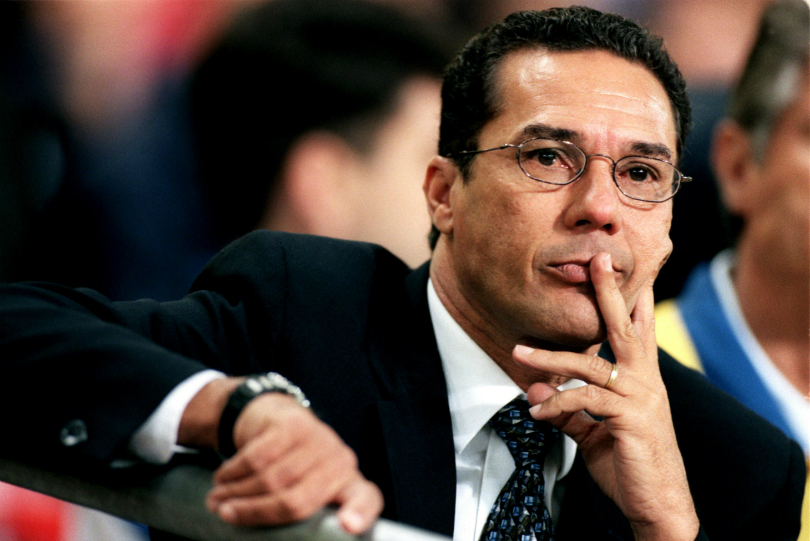
I couldn’t sleep for two or three days. I cried a lot. The feeling’s awful. You see your arse whipped by your biggest rival, and you just have to shut up and go home. Sometimes I still dream about the match
For the losers, it was humiliating. “I couldn’t sleep for two or three days,” says Neto. “I cried a lot. The feeling’s awful. You see your arse whipped by your biggest rival, and you just have to shut up and go home. Sometimes I still dream about the match.”
A year later, the clubs met to decide the Brazilian Championship, and again the alviverde came out on top, winning the first leg 3-1 then drawing 1-1. Their star was a skinny 22-year-old playmaker who had been thrown out of Corinthians as the scapegoat for a poor showing in the first stage of the competition. With three goals, Rivaldo gave Palmeiras their fourth national title and took revenge on his former club.
Continental competition
But the 80-year feud had yet to reach its boiling point. That came with consecutive showdowns in South America’s biggest competition, the Copa Libertadores of 1999 and 2000. The second legs of both ties were dubbed ‘Match of the Century’ and animosity was never far from the surface.
Leading Corinthians in ’99 were former Palmeiras midfielders Rincon and Edilson, plus Marcelinho, Brazil’s most disloyal footballer (as chosen in a 1996 players’ poll). Paulo Nunes and playmaker Alex were Palmeiras’ big hopes as the teams clashed in the quarter-finals.
The Parque Antarctica squad won the first game 2-0, but Corinthians bounced back to force a penalty shootout. Only playing because of injury to the No.1, 24-year-old Palmeiras keeper Marcos saved two penalties to send the alviverde through and earn the nickname ‘Saint’.
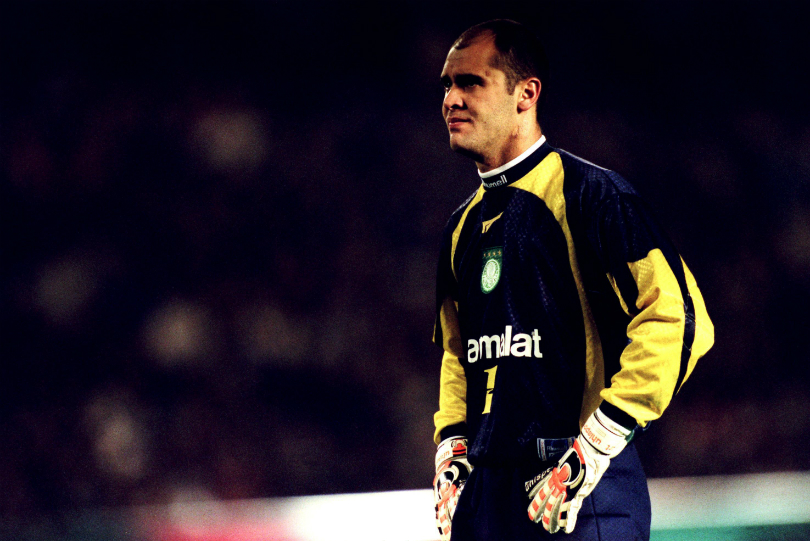
Palmeiras went on to Libertadores glory and a clash with Manchester United in the 1999 Intercontinental Cup, thus generating the fashion hit of that Brazilian summer: a half-Corinthians/half-United jersey – 100% counterfeit, of course.
Just four days after Palmeiras’ continental triumph, the sides met again for the State Championship. Still celebrating their title, Paulo Nunes and Junior Baiano provoked their rivals, saying Corinthians could only dream of a State crown. (Other fans refer to Corinthians as “domestic only”, because of their failure in international tournaments. In 2000, Corinthians won the first-ever FIFA World Club Championship, but the title is not taken seriously in Brazil – at least outside of Parque Sao Jorge.)
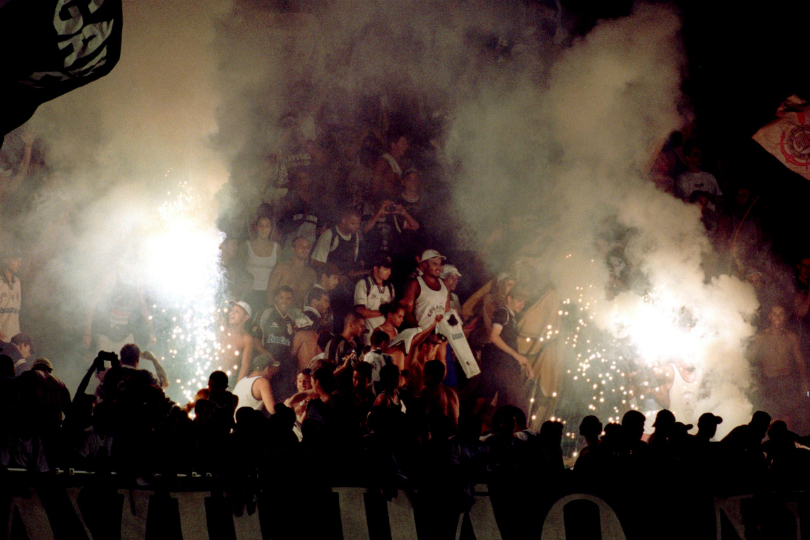
With the game tied at 2-2 at the 75th minute, Corinthians’ Edilson took the ball in space near the halfway line... and started doing keepie-ups. Incensed Palmeiras players led by Junior and Paulo Nunes went for Edilson, who punched Paulo Nunes in retaliation before running for it. The on-pitch brawl lasted 15 minutes and the referee abandoned the game. The title went to Corinthians, but even some of their players thought it was wrong.
After a 4-3 first-leg defeat, TV mikes outside the Palmeiras’ dressing room captured coach Scolari’s instructions to his players – hit Edilson with over-the-top tackles
Edilson was dropped by Brazil coach Wanderley Luxemburgo. The ill-feeling had barely diminished when the sides clashed in the 2000 Libertadores semi-final. The protagonists were the same: Edilson and Marcos.
After a 4-3 defeat in the first leg, TV mikes outside the Palmeiras’ dressing room captured coach Luis Felipe Scolari’s instructions to his players – hit Edilson with over-the-top tackles whenever possible to make him lose his temper. “Will nobody spit on him?” he added beautifully.
Yet this time, the players focused on football. Galeano’s 70th-minute goal gave Palmeiras a 3-2 win and sent the tie to penalties. Marcos saved Marcelinho’s shot and Palmeiras were through. “I made my name at the derby,” says Marcos of his two match-winning performances.
“When you play in the derby, you’re deciding your career’s future. If you have a really bad game, forget it, you’re done in football. But if you do well, the fans will always be grateful. If you shine in a derby, you can shine in any other game in the world.”
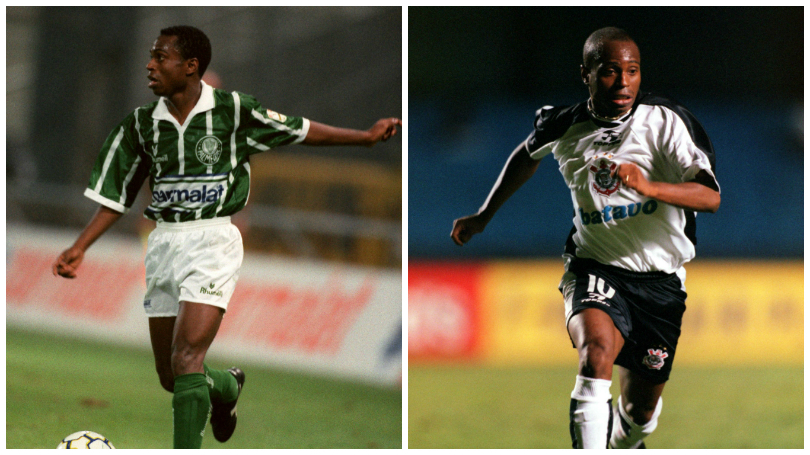
Corinthians vs Palmeiras, 2003
After the break, Munoz grabs another, but the game is over. Corinthians are through to the final where they'll defeat Sao Paulo FC to win their record 25th State title
State Championship, semi-final, second leg. Fifteen minutes. That’s all Corinthians need. Without Magrao and five defenders, Palmeiras are no match for the inspired black and whites, reinforced by Gil’s return. Liedson opens the scoring in the ninth minute, and then Palmeiras’ executioner shoots home in the 11th and 15th minutes.
Colombian Munoz makes it 3-1, but Rogerio, from the penalty spot, nets a fourth before half-time. After the break, Munoz grabs another, but the game is over. Corinthians are through to the final where they'll defeat Sao Paulo FC to win their record 25th State title.
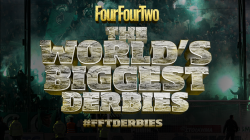
Palmeiras have not beaten Corinthians since the 2000 Libertadores, and the alvinegros’ secret, once again, may have been delivered from Palmeiras HQ. After playing a crucial role in Big Phil’s 1999 Libertadores-winning team, including a goal against Corinthians in the 2-0 quarter-final win, Rogerio was abandoned by the club’s directors, who would neither extend his contract nor release him.
Rogerio filed a lawsuit against the club, won his release in court and promptly signed for Corinthians, where he is now captain. In the seven derbies since his arrival, Corinthians have won four and drawn three. Will Palmeiras ever get the derby’s lucky charm back? “I wouldn’t say never, but it’s pretty improbable,” says Rogerio. “I’m doing very well at Corinthians.” It’s there in black and white.
This feature originally appeared in the October 2003 issue of FourFourTwo magazine. Subscribe!
